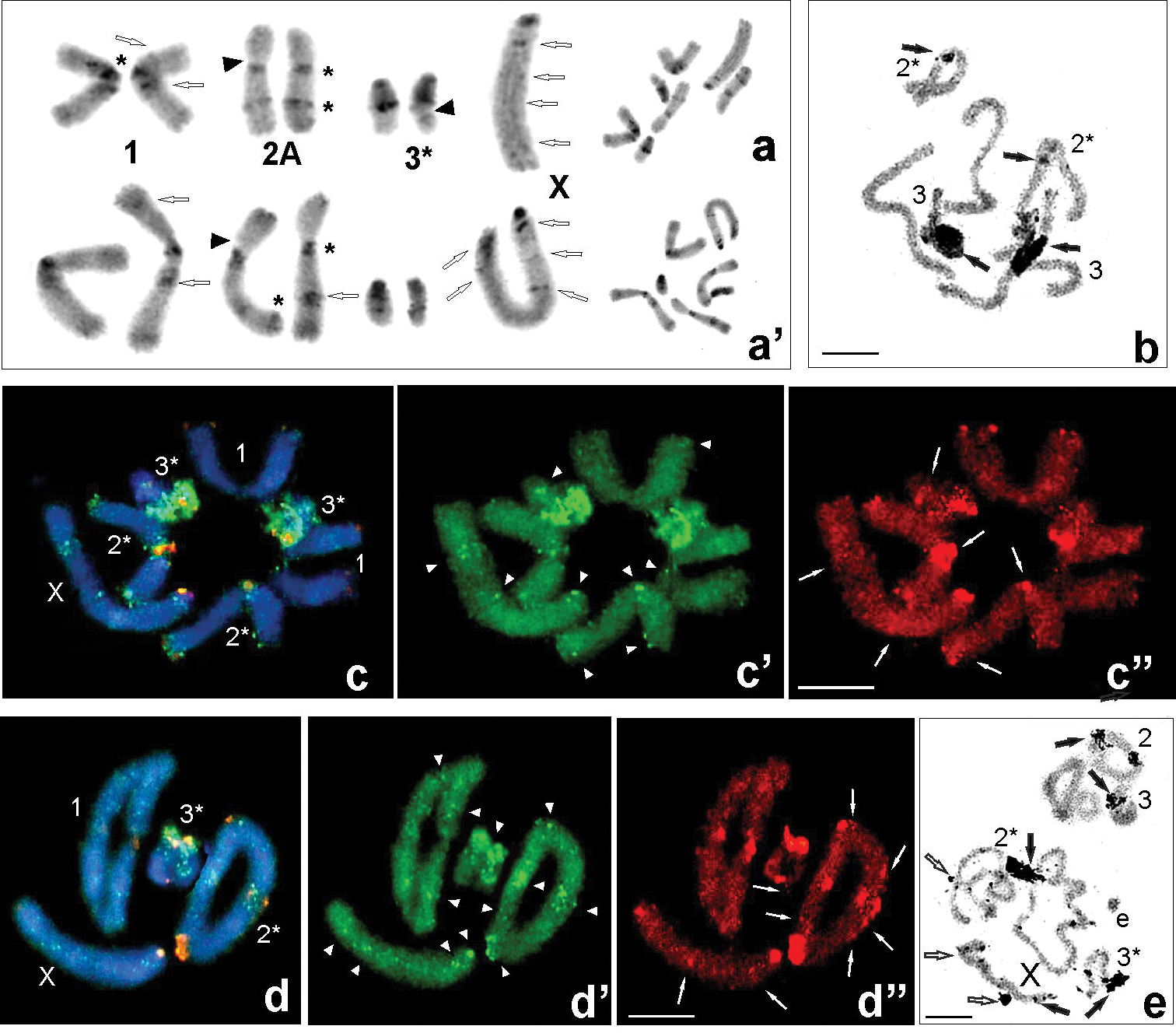
|
||
|
Examples of C-banding (a, a’), silver nitrate staining (b, e) and fluorescence in situ hybridization (c–c”, d–d”) in individuals with karyomorph 2A from populations: Udzungwa Mts (Ud CH8089) (a), Sigi (Si CH8621) (a’), Nilo (Ni HE97) (b, c–c”, d–d”, e). C-banding karyotypes of males chromosome complement (arranged from mitotic metaphase – right side); open arrows point to interstitial C-bands in the X chromosome and chromosome pairs 1st and 2nd; black arrowheads indicate secondary constriction (a, a’). AgNO3 staining in male spermatogonial metaphases (a) and metaphase I/ diplotene (e) revealed medium sized and large active NORs of the bivalents 2nd and 3rd (black arrows) and very small NORs seen in the X (open arrows). FISH using 18S rDNA (green – c, c’, d, d’) and telomeric DNA (red – c, c”, d, d”) probes in mitotic metaphase (c) and metaphase I (f); white arrowheads point to rDNA clusters near centromeric, interstitial and telomeric regions of the chromosomes (c’, d’) and white arrows ITS signals (c”, d”). Heterochromatin (a, a’, b, e) and hybridization areas (c, d) vary in size between homologous chromosomes, which are marked with asterisks (*). Elements (e) arisen from rearrangements were found (e). The X chromosome is indicated. Scale bars: 10 µm. |